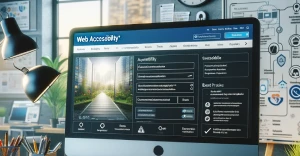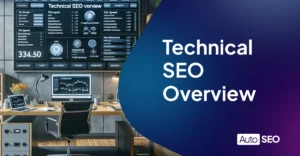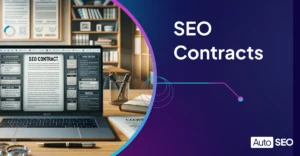Web Accessibility

If your digital space were a physical building, would it have ramps and braille signs?
In a time where 51% of the world’s population is online, web accessibility has swiftly become the ramp and braille of the digital world, responsible for ensuring an all-inclusive, barrier-free user experience. It’s the secret sauce that underpins your business’s reputation, clicks, and conversions, offering direct solutions to enhance your online user experience.
Yes, you read that right.
Web accessibility isn’t just about compliance and avoiding hefty penalties but is largely about transforming the staggeringly large 4.66 billion-strong internet user base into potential customers. And how does one tap into this ocean? The answer is simple: By evolving their website into a welcoming space for everyone. So, buckle up as we navigate this exciting world of web accessibility and learn how it’s revolutionising the way we create and experience digital content.
Table of Contents
Understanding the Importance of Web Accessibility
- Web accessibility enables equal online experiences for everyone
- There are legal requirements and implications attached to web accessibility
The Role of Web Accessibility in Inclusive Internet Use
Web accessibility levels the playing field, allowing everyone an equal shot to enjoy online experiences. Be it browsing, purchasing, connecting or learning, web accessibility aids in making these activities approachable and straightforward for all users.
When you boil it down, web accessibility refers to the inclusive and universal design of websites that can accommodate everyone, regardless of disability or special needs. Consider your local library, where ramps, Braille resources, and audio books have transformed it into an inclusive space for all. Similarly, web accessibility aims to create an inclusive digital space, ensuring everyone has equal access to information and functionalities online.
Let’s take an example from real life. Meet Sue, a visually impaired individual. With the help of screen reader technology and detailed alt text descriptions, Sue can shop online, catch up on the latest news, and remain connected with her friends – all aspects of life that many of us take for granted. Hence, web accessibility can significantly impact users’ lives, facilitating equitable access to the digital world.
Legal Implications of Web Accessibility
Web accessibility isn’t merely a noble goal, but it’s also a legal requirement. Numerous laws and directives around the globe demand that websites be accessible. These legal requirements must be fulfilled by all site owners, underlining the importance of ensuring your digital content is easily navigable and comprehensible to everyone, regardless of their abilities or limitations.
Rewind to 2018 when the American pizza giant, Domino’s, was sued because its website and app were not fully accessible to visually impaired users. In a similar case, Winn-Dixie lost a lawsuit in 2017 due to inaccessible websites. These are just highlights; many such lawsuits are testament to the legal necessity of web accessibility.
From both a moral and legal perspective, web accessibility is not something that can be overlooked. Ensuring an inclusive internet experience for everyone is not just desirable – it’s mandatory.
Remember, an accessible web is a better web for everyone. Enhancing web accessibility aids user experience, harbors inclusivity, and abides by legal mandates. In the grand scheme of things, it helps your business tap into a wider audience and further your reach.
Web Accessibility Guidelines: Ensuring a User-Friendly Experience (Next 30%)
Strengthening online visitor experience relies heavily on incorporating W3C’s Web Content Accessibility Guidelines (WCAG). Let’s dive deeper.
- Become conversational with the four principles of WCAG
- Practice methods for utilizing WCAG in your own development process
Overview of W3C’s Web Content Accessibility Guidelines (WCAG)
There’s no overstating the significance of the WCAG when it comes to web design and development. This set of guidelines is tailored to ensure that everyone, including people with disabilities, navigates and interacts with websites smoothly and effectively.
Understanding The Importance of WCAG in Web Design and Development
The WCAG plays a pivotal role in making the digital world as inclusive as possible. By implementing its principles, developers create user-friendly spaces that offer interaction possibilities to the broadest range of users, making the digital world as barrier-free as possible. (MANUAL CHECK – perhaps a diagram illustrating WCAG’s role in inclusive web design would be beneficial here)
#### H4: Decoding the Four Principles of WCAG: Perceivable, Operable, Understandable, and Robust (POUR)
The major pillars of the WCAG are embodied in the acronym POUR. First, the content must be *Perceivable* – this means that users should be able to perceive the information being presented, it can’t be invisible. Secondly, users must be able to *Operate* the interface and navigation. The third principle dictates that information and operation of the user interface must be *Understandable*. Finally, the content should be robust enough that it can be reliably interpreted by a wide range of user agents, including assistive technologies, hence, *Robust*.
Practical Steps to Implement Web Accessibility Guidelines
Knowing the guidelines is one thing; applying them requires a different set of skills. Let’s walk through how we can implement these guidelines effectively into our design and development.
Guide on How to Implement WCAG in Design and Development
WCAG implementation isn’t a one-off project; it’s a practice that ought to be woven into every stage of your design and development process. The first step is to understand the principles (POUR) and their significance. Next, apply these during the design phase, considering how each element and functionality might play out for different users. Once the site is live, ongoing testing and iterative improvements become key.
Tips and Best Practices for Each Step
Each implementation phase brings unique challenges and opportunities. During design, mapping out accessible user journeys can be a game-changer. For development, prioritising semantic HTML goes a long way towards creating a readable site for assistive technologies. And when it comes to testing, manual checks, the use of automated tools, and real-life user testing can help spot gaps and room for enhancement.
Knowing and applying the WCAG is essential in leveling up the user experience, making your digital spaces truly interactive and inclusive. Inclusivity, after all, is progress.
Tools to Improve Web Accessibility (Last 40%)
- Uncover the fundamental tools developers can use to level up web accessibility.
- In-depth preview of each tool’s features and benefits.
- Alignment of these tools with practical application and impact.
Top Web Accessibility Tools for Developers
Web accessibility assuredly goes a long way in delivering enhanced user experience. But one may wonder, what aids the developers in achieving this? A wide array of tools do exist which help developers in accomplishing effective web accessibility. With the myriad options, knowing which tool works best for specific needs becomes paramount for professionals occupied in streamlining web spaces. In the next paragraphs, we will delve into unique features and benefits of some of the best web accessibility tools ensconced in the market.
Consider this: An artist requires a spectrum of colors, brushes, and substrates to paint a masterpiece to their satisfaction, and in a similar vein, developers need a range of tools to achieve an allure in UX design. While every artist has a personal preference for their instruments, every developer also has a favorite set of tools they resonate with. So, let’s explore some of these innovative, developer-friendly web accessibility tools.
First, we have the WAVE (Web Accessibility Evaluation Tool), a browser extension that provides visual feedback about the accessibility of your web content by injecting icons and indicators into your page. WAVE is well-known for its unique feature of performing web content accessibility evaluation directly within Chrome and Firefox browsers, which eliminates the need for a standalone website or application.
To augment WAVE, there’s aXe, a self-proclaimed “open-source rules library for accessibility testing.” Developed by Deque Systems, aXe aids in detecting and resolving accessibility issues in development, eliminating long hours of debugging and manual checking. It’s a useful tool for developers pressed for time.
Another significant tool is SiteImprove, a cloud-based suite of services that help businesses raise site quality, ease user experiences, and execute website promotions. SiteImprove includes modules for SEO, accessibility, analytics, quality assurance, and more. Its ability to provide a comprehensive array of services in one platform gives it a significant edge.
Finally, for developers who primarily use WordPress for website building, the WP accessibility plugin is worth considering. This plugin tackles numerous WordPress accessibility issues and removes barriers in the web interaction for users with disabilities.
In the grand tapestry of web accessibility, the importance of these tools is undeniable. They provide developers with the fundamentals required to create an inviting and accessible digital space. They pave the way towards a more inclusive internet, one website at a time.
Evolving web accessibility not only upgrades the internet ecosystem but also encourages the sprouting and growth of businesses in all sectors by amplifying their reach.
Remember, for every challenge, there is an appropriate tool. However, tools are only as effective as the hands that wield them. Grandmasters of web development know to select the right instrument based on the problem at hand, lending a subtle finesse to their solutions. Unifying the best practices of web accessibility with these top-notch tools is the key to creating a website that stands the test of time.
Time is of the essence, and every investment in improving web accessibility can lead to significant returns – be it in user satisfaction, wider reach, or positive brand impression.
By now, web accessibility and its importance should be integral knowledge. As we move forward, we will see how this not only benefits the end-users but also the businesses catering to them. The more inclusive the internet becomes, the bigger the playing field for businesses, resulting in a win-win for all parties involved.
Not goodbye: The journey with web accessibility isn’t over yet. So hold tight, there’s more to come.
The Benefits of Web Accessibility for Businesses and Users
- Web accessibility enhances user experience, promoting higher user engagement and conversion rates.
- The improvement of web accessibility can significantly boost a website’s SEO performance.
How Web Accessibility Enhances User Experience
Web accessibility is not merely a mandate for efficient and equitable website usability— it is a critical element in amplifying users’ experience. Incorporating accessibility features increases site comprehension, promotes seamless navigation, and delicately handles diverse users’ unique requirements— from those with disabilities to those using outdated software or hardware. As such, web accessibility is a direct route to an enhanced user experience.
The value of an enhanced user experience manifests in higher user engagement, leading to increased conversion rates. Take, for instance, the use of larger, more readable fonts and significant contrast ratios; such tweaks make a site more comfortable to read, thus decreasing bounce rates. Similarly, keyboard accessibility provides ease to users who can’t use a mouse, increasing time spent on the site. Consequently, with the higher possibility for meaningful interactions, the potential for positive user action— may it be a form submission, product purchase, or a subscription— is considerably heightened.
The Impact of Web Accessibility on SEO
Web accessibility and Search Engine Optimization (SEO) go hand in hand, and the intersection of these two areas serves as a fertile ground for website performance optimization. Accessible websites tend to be highly usable and legible, both crucial features that search engines value when ranking sites.
Improving web accessibility primarily means creating a site that’s easy to navigate and understand, fundamentals that concurrently enhance a website’s SEO performance. Making your website accessible means structured content, clear headings, concise meta tags—all SEO-friendly practices. Screen readers and search engines function stunningly alike; they both appreciate well-structured, cleanly coded, and concise content. In essence, by focusing on web accessibility, you’re concurrently making your site more appealing to search engine bots, inevitably lifting your SEO ranking.
Thus, businesses must understand web accessibility as a long-term investment that yields multi-faceted rewards, from achieving better rankings on search engines to ensuring positive user experience, which eventually translates to higher engagement and conversion rates.
Conclusion – Let’s Action Web Accessibility!
Web accessibility isn’t just the right path to inclusion; it gives a significant boost to your user experience. It simplifies navigation, improves SEO, and builds brand reputation.
Putting this knowledge to use requires no leaps. It starts with embracing web accessibility guidelines like WCAG and integrating them into your design process. Consider training for your team or working with an accessibility expert to ensure no user is left behind.
While you’re implementing these accessibility enhancements, keep in mind: Who among your users will benefit most from these changes? Can you create subtle tailor-made adjustments for even better accessibility?
Remember, an accessible web doesn’t just happen. It’s constructed. So, let’s start constructing yours.
Your UX and your customers will thank you.
Let’s turn your website into a welcoming destination for all.

Written by Peter Selmeczy
As the Head of Growth at AutoSEO I love everything about content, SEO, and AI. Hope you like my musings and would love to talk to you in the comments.



